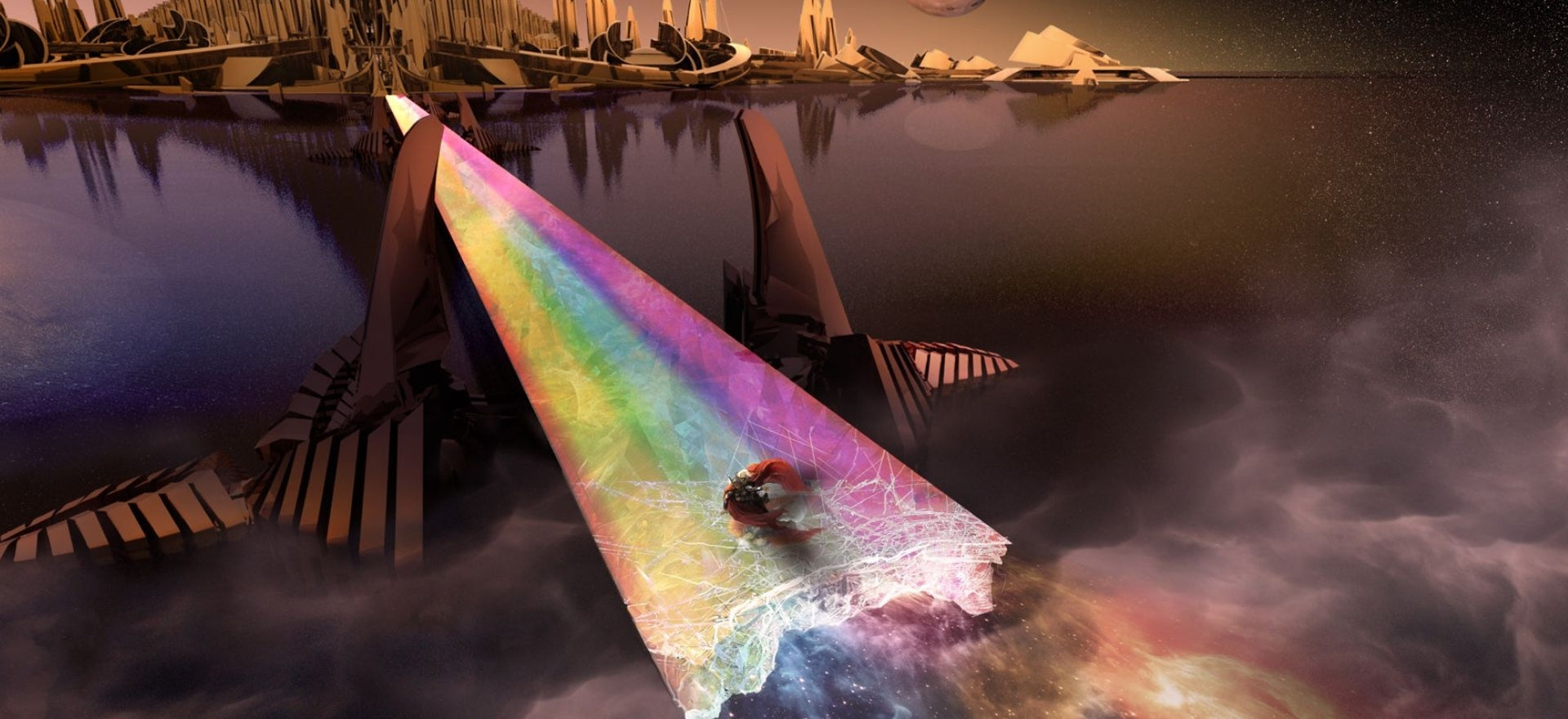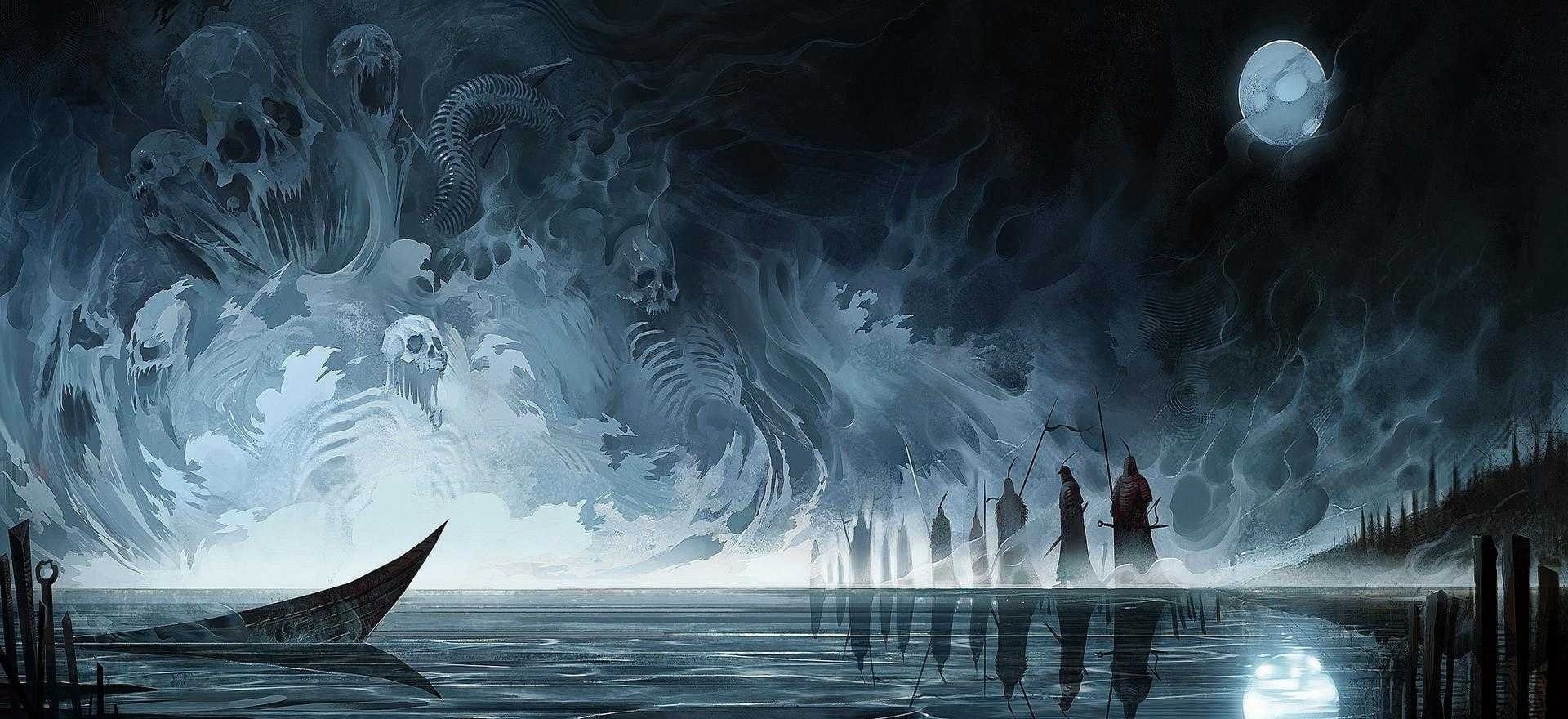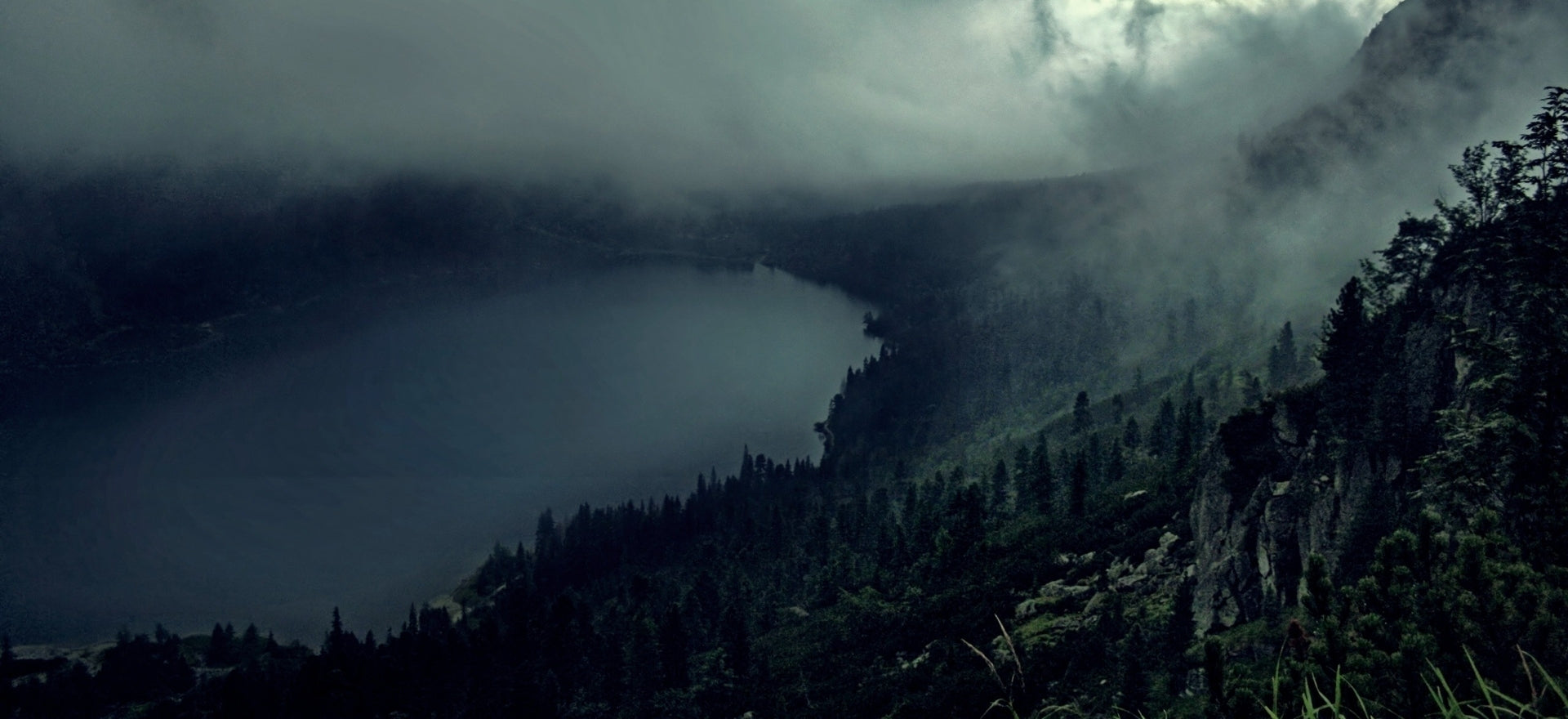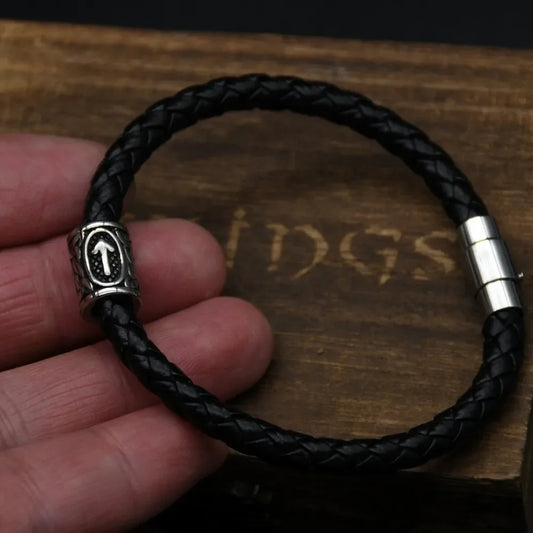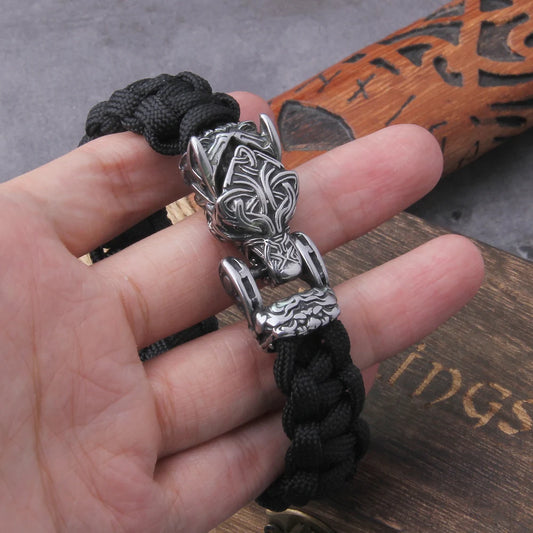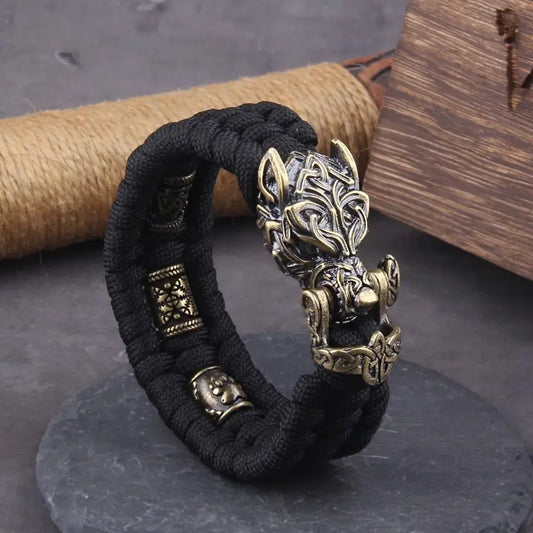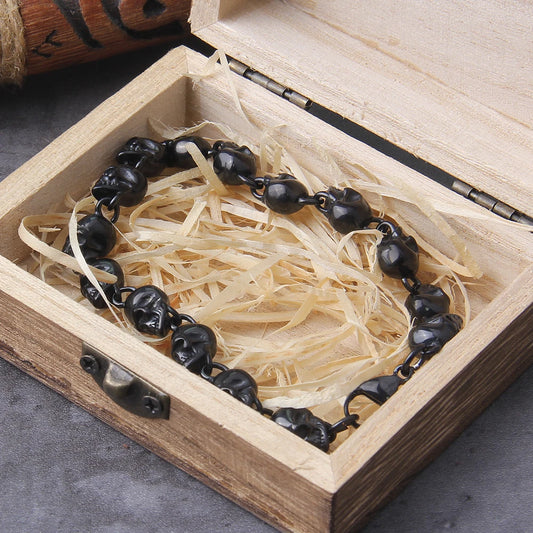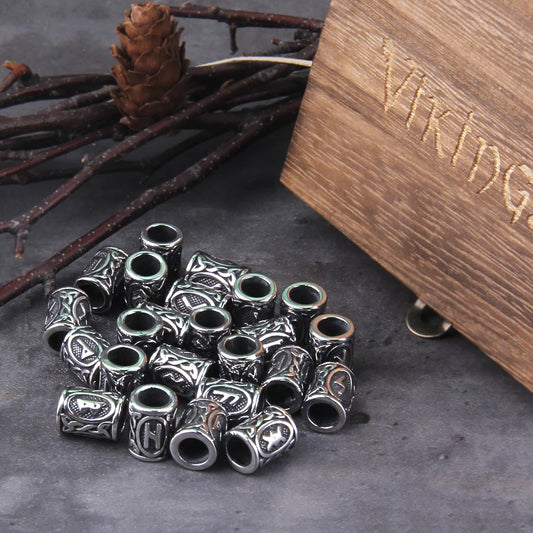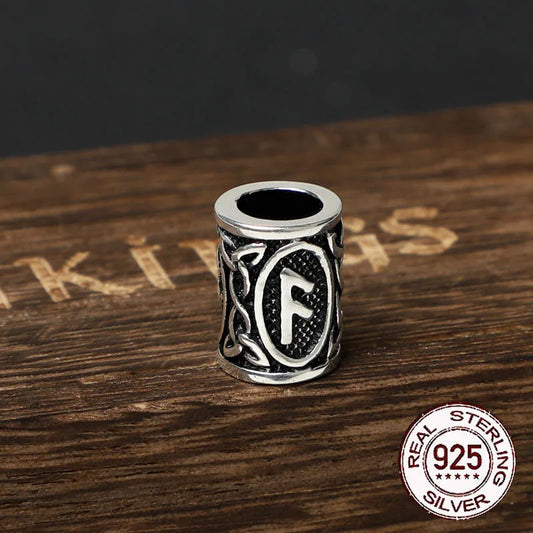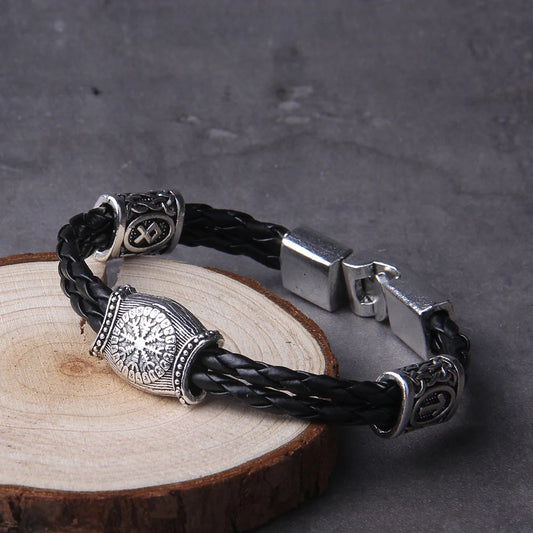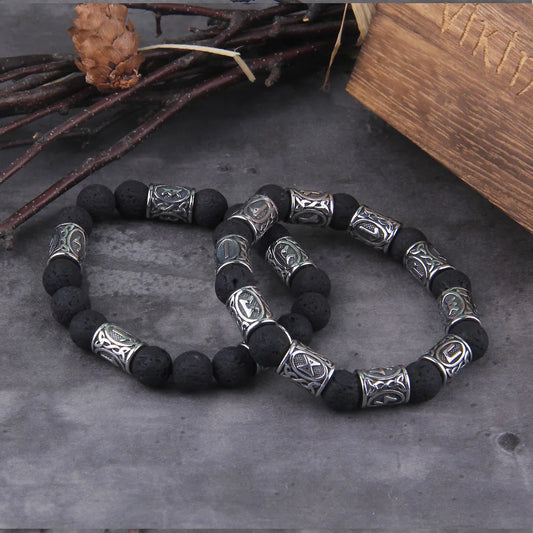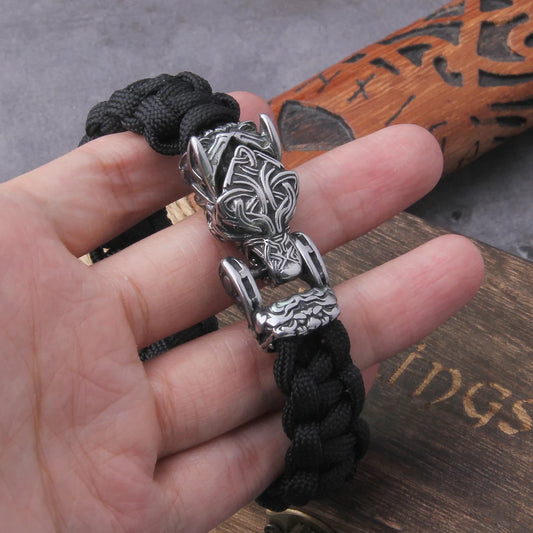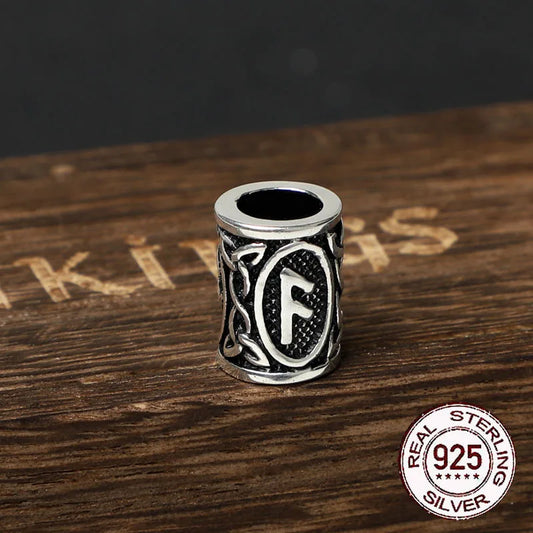In Norse mythology, Valhalla (from Old Norse Valhǫll, "hall of the fallen") is a massive and majestic hall located in the world of Asgard ruled by Odin.
Half of those killed in battle are chosen by Odin and travel to Valhalla guided by the Valkyries, while the other half go to the Fólkvangr of the goddess Freya.
In Valhalla the dead meet the masses of the battle-dead known as Einherjar, as well as various legendary Norse-Germanic heroes and gods, as they prepare to join Odin in Ragnarök, the battle of the end of the world.
Before the great hall, whose ceiling is covered with golden shields, stands the golden Glasir tree. Around Valhalla dwell various creatures, such as the stag Eikþyrnir and the goat Heiðrún, who graze the foliage of the tree Læraðr.
Valhalla is described in the poetic Edda, a collection of poems compiled in the 13th century from ancient traditional sources, in the prosaic Edda and in the Heimskringla, both written by Snorri Sturluson also in the 13th century, and in a few stanzas of an anonymous 10th century poem, known as Eiríksmál and included in the Fagrskinna saga, which commemorates the death of Erich I of Norway.
Valhalla has inspired various works of art, titles of publications, popular culture and has become a term synonymous with the place of worship of great figures who have passed away.
Valhalla in the Eddas
The poems Grímnismál and Helgakviða Hundingsbana II of the poetic Edda describe Valhalla in detail.
Also stanza 33 of the poem Völuspá speaks briefly of this place when it narrates the death of the god Baldr as the "affliction of Valhalla";3 between stanzas 1 and 3 of Hyndluljóð in which the goddess Freya expresses her intention to ride to Valhalla together with the völva Hyndla in an effort to help Ódder, and in stanzas 6 and 7, where Valhalla is mentioned again during a dispute between the two.
Valhalla in Grímnismál
Between stanzas 8 and 10 of Grímnismál the god Odin (disguised as Grímnir) states that Valhalla is in Glaðsheimr, the fifth heavenly abode, where, all shining with gold, it occupies a vast place.
Odin chooses there every day from among the men slain on the battlefields.
The great hall has spears as beams, a roof covered with shields, chain mail stretched over its benches, a wolf is chained in front of the west door and an eagle hovers above.
From stanza 22 to 24 Odin gives more details of Valhalla: before the great hall are the sacred gates of the ancient Valgrind gate and it has a total of 540 gates through which eight hundred einherjar come out at a time when they go to fight the wolf Fenrir. Within Valhalla is Thor's palace Bilskirnir, and within it are 540 halls.
In stanzas 25 and 26 Odin says that the goat Heiðrún and the deer Eikþyrnir walk in Odin's courtyards and feed on the branches of the tree Læraðr. Heiðrún produces a mead beyond compare, and from the antlers of Eikþyrnir drips liquid into the fountain Hvergelmir, from which all waters flow.
Valhalla in Helgakviða Hundingsbana II
In the prose following this stanza it is said that a burial mound was made for Helgi, and when he arrived at Valhalla he was asked by Odin to collaborate with him.
In stanza 39 Helgi, already in Valhalla, and his old enemy Hunding, who is also there, do household chores such as lighting the fire, tending the dogs, watching the horses or feeding the pigs before they can sleep.
From stanzas 40 to 42 Helgi has returned to Midgard from Valhalla along with a host of men. An anonymous maid of Sigrún, Helgi's Valkyrie wife, sees Helgi and his host of men riding over the barrow.
The maid wonders if she is having a vision, if Ragnarök has begun, or if Helgi and his men have been allowed to return.
In the following stanzas Helgi replies that none of these things have happened, and that Sigrún's maid must return to her mistress's house. She tells Sigrún that the burial mound has been opened and that she must go there because Helgi has told her to come and heal my wounds, which have opened and are bleeding.
Sigrún goes to the burial mound and finds Helgi drenched in blood and with frozen hair. Filled with joy at this reunion, Sigrún kisses him before removing his coat of mail, and asks how she can heal him.
The Valkyrie makes a bed and the two sleep together inside the mound until Helgi awakens and says that "he must walk the blood-red roads, ride the yellow horse and travel the path of heaven" to return before the cock Salgófnir crows.
Helgi and his host ride again, and Sigrún and her maid return home. The next night the Valkyrie orders her maid to watch the barrow again, but when dawn comes she discovers that he has not returned.
The narrative prose at the end of the poem tells that Sigrún died of sadness, but also states that both are thought to be reborn as Helgi Haddingjaskati and the valkyrie Kára.
Valhalla in Gylfaginning
Valhalla is first mentioned in chapter 2 of the book Gylfaginning, where it is partially described in the form of evemerism. King Gylfi sets out for Asgard disguised as an old man and under the name of Gangleri in order to find the source of the power of the gods.
The narrative says that the Æsir foresaw his arrival and prepared to receive him with great excitement, so much so that when Gangleri entered the fortress he saw a hall so high that he had trouble seeing beyond it, and that he tells that it was covered with golden shields like tiles. At this point Snorri quotes a stanza from the tenth-century poet Þjóðólfr of Hvinir.
As he proceeds, Gangleri sees a man at the door of the hall juggling short swords and holding seven of them in the air. Among other things, the man tells him that the hall belongs to his king, and adds that he can take him to his monarch.
Gangleri follows him and the doors close behind him. He observes around him a lot of life, crowds of people, some playing, or drinking or fighting with weapons. Gangleri observes three thrones occupied by three figures: Hár sitting on the lowest throne, Jafnhár on the next, and Þriði on the highest. The man guiding him tells him that Hár is the king of the hall.
In chapter 20 Þriði states that in Valhalla dwell Odin and the einherjar, the slain in battle who became adopted sons of the god.13 In 36 Hár says that the valkyries serve drinks and wait on the tables in the great hall, and in stanzas 40 and 41 of the Grímnismál there is a quotation referring to this. Hár goes on to expound that the valkyries are sent by Odin to every battle, where they choose those who are to die and determine victory.
In chapter 38 Gangleri says: "You claim that all those who have died in battle since the beginning of time are now with Odin in Valhalla. What does he do to feed them? I suppose there is a great multitude here." Hár replies that this is true, that many people dwell in Valhalla, but that they seem very few "when the wolf comes."
He describes that there are never too many to eat in the great hall because they feed on the Sæhrimnir (here described as a boar), a beast that is cooked every day and returned whole every night. Stanza 18 of the Grímnismál is recounted here once again.
Gangleri questions whether Odin himself ingests the same as the einherjar, to which Hár replies that the god does not need to eat, he only drinks wine and gives the food to his wolves Geri and Freki.
At this point stanza 19 is again quoted. Hár adds that, at sunrise, Odin sends his ravens Hugin and Munin from Valhalla to fly over the whole world and they return in time for the first meal.
Gangleri asks in Chapter 39 about the food and drink consumed by the einherjar and whether there is only water there, to which Hár replies that of course, that Valhalla has food and drink fit for kings and lords, since the mead drunk there comes from the udders of the goat Heiðrún, which in turn feeds on the leaves of the tree Læraðr.
The goat produces mead to fill a vat so large that all the einherjar of Valhalla could quench their thirst in it. Hár further notes that the stag Eikþyrnir also grazes from the Læraðr tree high in the great hall. From its antlers fall numerous drops of moisture into the Hvelgelmir spring, from which many rivers flow.
In Chapter 40 Gangleri reflects that Valhalla must have been overcrowded, to which Hár replies that this is huge and has space despite its large number of inhabitants. At this point stanza 23 of the Grímnismál is quoted.
In 41 Gangleri comments that Odin seems to be a powerful lord, for he controls a large army, but still wonders how he keeps the einherjar in check when they are not drinking. Hár replies that daily, after dressing and arming himself, he goes out into the courtyard and fights one in single combat for sport. Then, at mealtime, he travels to Valhalla and drinks.
At this point stanza 41 of the Vafþrúðnismál is quoted. In chapter 42 Hár describes that, "right in the beginning, when the gods were settling down," they founded Asgard and built Valhalla.17 Chapter 49 recounts the death of the god Baldr and the mistletoe, which killed him, is said to grow west of Valhalla.
Valhalla in Skáldskaparmál
In the beginning of Skáldskaparmál, the visit of the jotun Aegir to Asgard is briefly discussed, where shining swords are brought and used as their only source of illumination while drinking.
Here, at a feast with numerous gods, all have plenty of strong mead in a room with the walls covered with attractive shields.19 Chapter 33 confirms that this situation occurs in Valhalla.
In Chapter 17 of Skáldskaparmál, the jotun (giant) Hrungnir, who is enraged, tries to overtake and attack Odin on the back of his horse Sleipnir and ends up before the gates of Valhalla, where the Æsir invite him to drink.
Hrungnir enters, asks for a drink and gets drunk and returns violent, saying, among other things, that he will tear up Valhalla and take it to the land of the jotun, Jötunheim. Finally the gods tire of his bravado and summon Thor, who makes an appearance.
Hrungnir says that Thor is under his protection, so he cannot be harmed while in Valhalla. After an exchange of words, the giant challenges Thor to a duel at Griotunagardar, where the god kills him.
In chapter 34, the Glasir tree is said to be in front of the gates of Valhalla. It is described as a tree with golden red foliage, the most beautiful of all trees among both men and gods. A quotation from a 9th century work by the poet Bragi Boddason is presented which confirms this description.
Valhalla in Heimskringla
Valhalla is mentioned in an evemeric sense, as a surviving element of Norse pagan belief, in the Heimskringla sagas. In chapter 8 of the Ynglings saga the "historical" Odin is described as lawgiver of his country, enacting laws such as that all the dead should be cremated on a funeral pyre in a burial mound along with all their possessions, then buried or their ashes thrown into the sea.
The deceased would then be taken to Valhalla with whatever was on his pyre and whatever had been buried with him. Valhalla is further mentioned in the phrase "visiting Odin" from a tenth-century work by the scaldo (warrior poet) Þjóðólfr of Hvinir who describes how, after his death, King Vanlandi went to Valhalla.
In chapter 23 of Hákonar saga Góða King Haakon I of Norway is buried according to a pagan ritual that is described as his journey to Valhalla. Below are quoted verses from the poem Hákonarmál that confirm this with various references to the Hall of the Dead.
Valhalla in Fagrskinna
In chapter 8 of the Fagrskinna saga a prose narrative describes how, after the death of her husband Erich I of Norway, Queen Gunnhild had a poem dedicated to him, an anonymous composition by a 10th century author, known as Eiríksmál, which describes how Erich I and five other kings reach Valhalla after his death.
The god Bragi warns that a thunderous sound is approaching, and says that the benches of Valhalla are creaking, as if the god Baldr had returned to Valhalla, and that it sounds like the movement of thousands of men.
Odin replies that Bragi knows well that the sounds come from Erico I, who will soon arrive in Valhalla. Odin tells the heroes Sigmund and Sinfjötli to rise to greet Erico and invite him into the hall, if it is true that it is indeed him.
Sigmund asks Odin what he might expect from Erico more than from any other king, to which Odin replies that Erico has bloodied his sword in many different lands.
Erico arrives and Sigmund greets him, telling him that he is welcome in the hall, and asks him what other lords he has brought with him to Valhalla. Erico answers that five kings come with him, that he will tell him the names of all of them, and that he himself is the sixth.
Valhalla's Modern Influence
The term Valhalla, in its various variants, has had quite an echo in modern popular culture, either through the direct influence of Norse mythology or simply as a reference to a place where various deceased are honored.
Examples of the latter are the Walhalla monument designed by neoclassical architect Leo von Klenze by order of Ludwig I of Bavaria and built on the banks of the Danube River near Regensburg, Germany, between 1830 and 1847 to house busts of illustrious Germanic figures from antiquity, or the Valhalla Gardens at Tresco Abbey Museum built by August Smith around 1830 to display the figureheads of ships wrecked in the Scilly Isles, UK.29 30 On the satellite Callisto of the planet Jupiter there is a crater named Valhalla.
References to Valhalla can be found in literature, art, music and other media. Examples are Richard Wagner's four-opera cycle The Ring of the Nibelung, the Germanic neo-pagan magazine Walhalla (1905-1913) and Peter Madsen's comic book series Valhalla (from 1978) and its subsequent animated film.
Valhalla is repeatedly quoted, with the refrain "Valhalla, I am coming", in the popular song "Immigrant Song" (1970) by the British music group Led Zeppelin. 32. The English rock band Jethro Tull has a song titled Cold Wind to Valhalla, from 1975.
In the British band Black Sabbath in their album Tyr (album) describes it in the song Valhalla. Also the American band 30 Seconds To Mars has a song with the title Valhalla. On the other hand, Judas Priest, the famous heavy metal band, has a song titled Halls of Valhalla from the album Redeemer of Souls.
The famous power metal band Blind Guardian has a song called Valhalla, while the Spanish band Dark Moor has a song titled Walhalla. The Viking Metal band Bathory in their album Hammerheart included a song with the same name, Valhalla.
Valhalla is referred to in numerous video games and some amusement parks, such as Tivoli Gardens in Copenhagen, Denmark,33 or the Valhalla attraction at Pleasure Beach Blackpool Park in Blackpool, UK.
Likewise, it is cited in the films Conan the Barbarian (1982), starring Arnold Schwarzenegger, and in Mad Max: Fury Road (2015), in which the main antagonist's soldiers are obsessed with reaching Valhalla after a violent death. In the video game The Elder Scrolls V: Skyrim, the protagonist must access the Hall of Valor, a clear reference to Valhalla.


